For many people, the best agricultural university in the world is in Wageningen. But is that still true? And is the phenomenal rise of Chinese science a threat to that status?
At the start of 2016, the champagne flowed on the sixth floor of Atlas, the administration building. Wageningen University & Research could officially call itself the best agricultural university in the world, according to the reputable British QS ranking. For the first time, WUR overtook the American universities UC Davis and Cornell in the fields of agriculture and forestry. The first Chinese university in the ranking, the China Agricultural University (CAU) was in position 22 at that point. Less than ten years later, things are looking quite different. WUR is still in pride of place at the top, but CAU has climbed to eighth position. And it is not alone in that climb. In the past decade, China has grown into an ‘R&D superpower’, declared the Rathenau Institute in a study published in August.
The Chinese government has invested an awful lot in science
Its power comes from investments, the institute concluded. Thirty years ago, China invested the same amount in science as the Netherlands, a small country. Then things changed fast. When the champagne was flowing at WUR in 2016, Chinese investments surpassed for the first time those of the entire European Union. China currently has the most scientists in the world. And only the US still spends more on scientific research than China.
This investment leads to measurable scientific achievements. Since 2019, the majority of scientific publications, a key factor in the scores that determine the ranking (see the figure), have come not from Europe or the US, but from China. That is shown by figures – based on the Scopus database – from Ellen Fest, head of Research Support at WUR Library. Ten years ago, Chinese researchers published half as much as their European and American counterparts. China overtook the US in 2019, and Europe two years later. The leap in production of the past three years has been particularly spectacular, and Chinese scientists now produce half as much again as their European counterparts, and twice as much as those in the US. And this includes academic domains that have traditionally been WUR’s strengths.
Achievements
‘And those figures are not just about the actual publications,’ says professor of Soil Biology Jan Willem van Groenigen. ‘The number of articles submitted is a lot bigger than that. You can’t see that from Scopus, because we don’t know what editors have rejected. But I do know the figures for Geoderma.’ Van Groenigen is editor-in-chief of that leading soil sciences journal. ‘We get about 2300 articles a year. Three quarters of them come from China. About 15 per cent of those get into the journal. We are seeing the same trend as you see in the library’s graph: China overtook the US about three years ago, and the EU a bit later. In the journal, it means that 45 per cent of the published articles now come from China. Next comes Europe with 32 per cent and then the US with only 11 per cent.’ Professor Han Zuilhof (Organic Chemistry) is not surprised by the boom in Chinese science. He regularly spends time in China as a visiting professor. ‘The Chinese government has invested a lot in science. Over the past few decades, the big manufacturers of scientific apparatus have sold up to 70 per cent of their goods in China. I’ve seen expensive equipment that we’ve been haggling to get for years sitting idle in a corridor there, because no one’s had time to unpack it. That level of investment is reflected in the output.
Apart from a few areas, we are not the best anymore
Chinese society also expects a lot of its citizens. For many Chinese scientists, excellent performance is a must for finding a job and making a living. The competition is fierce and everything revolves around output and impact factors.’
The increased rate of publication is reflected in the diverse rankings of universities (see inset). The Chinese universities score particularly well in rankings that only look at the number of articles and citations. In the Leiden Ranking, for instance, eight of the ten most productive universities in the world are Chinese. In the Wageningen domain (life and earth sciences), seven Chinese universities are in the production top ten, with WUR in eleventh place. But Chinese science is keeping its end up qualitatively too. ‘There’s been a massive improvement in the average quality of the Chinese articles we are sent in recent years,’ says Van Groenigen. Here too, the figures speak for themselves (see inset).
Distorting
But Dean of Research and editor of three journals Wouter Hendriks has a side note about that development. ‘Most of the Chinese research is along the lines of ‘the effect of this on that.’ It is more of the same. There isn’t very often a hypothesis behind it. As an editor, I reject a lot of Chinese research because the quality is not good enough in my view.’ Van Groenigen perceives the same lack of originality. ‘The average quality is good but there are relatively few really excellent articles among the Chinese studies. I don’t see very many great ideas or big names. We reject four times as many Chinese articles as European or American ones.’
‘The pressure to perform in Chinese scientific circles stimulates opportunism,’ says Zuilhof. ‘In order to climb the ladder, several articles are written on the same subject. Nobel Prize work is all about originality, about research that people do because it’s cool and not because it scores citations.’
Hendriks also points out how rankings can have a distorting effect. ‘Rankings can be influenced by things like self-citation. I asked the library to analyse that a few years ago. Chinese researchers reference other Chinese researchers nearly twice as often as foreign studies.’ And then there is the impact of predatory journals, which ‘are only made to earn money’, says Hendriks. ‘Among those journals, the review process is less strict and everything that is submitted gets published. After all, more articles mean more references, and therefore a higher impact factor for the journal. And so the whole system becomes commercialized. The volume of output increases but quality goes down across the board. While we used to have faith in the review process, you have to take that with a pinch of salt these days. It is much more up to the reader to assess the quality.’
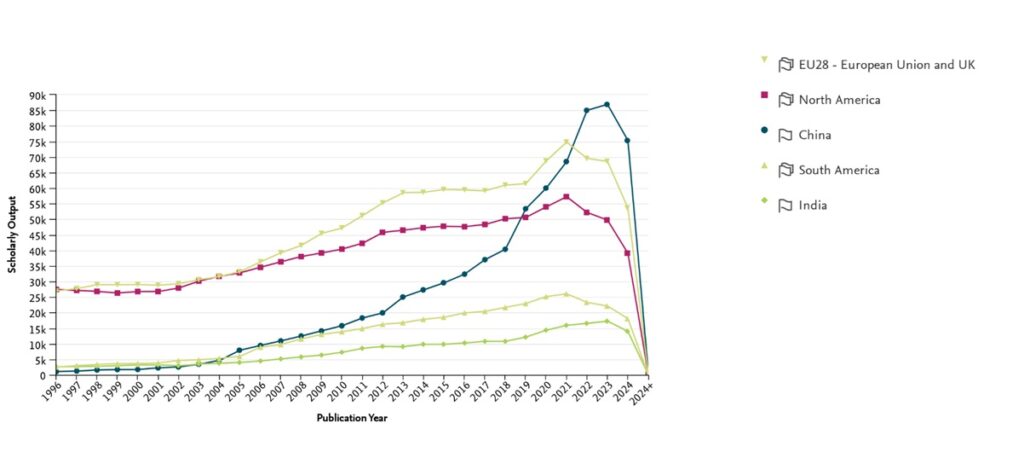
Number of scientific publications since 1996. Source WUR Library
And how is WUR faring on the publication battlefield? Are we still the best? No, says Hendriks decidedly. ‘Apart from a few areas, we are not the best anymore. We are still the best when it comes to educating students. But we are slowly falling down the rankings.’ And he doesn’t think it will be easy for us to reclaim the lost ground. ‘In terms of quantity, we’re never going to win as an organization anyway. The only strategy is to go all out for quality.
I think WUR should embrace the progress made by the Chinese universities
In my chair group, for example, we’ve made a list of journals we would like to be published in. Journals with a good review process, which we are happy to be associated with. WUR needs to focus on quality, and we mustn’t go along with all the benchmarking. Utrecht University has stopped participating in rankings. We should do the same.’
China coordinator Xiaoyong Zhang is equally clear on the subject. ‘If you look at the various international rankings, WUR is no longer at the top.
What does a ranking really tell you? In the sciences, I think reputation is far more important
Especially not in the domain of nutrition research. But it depends how you look at it. According to the Dutch universities guide De Keuzegids WUR is still the best Dutch university.’ The rapid rise of the Chinese universities has certainly had an impact, says Zhang. ‘We can see that from the big drop in the number of Chinese students who have enrolled here this year. I actually think WUR should embrace the progress made by Chinese universities. It makes us more equal partners. We shouldn’t see it as a competition, but as an opportunity for a stronger partnership and joint innovations.’
Idiotic question
‘Actually, I think whether we’re the best is an idiotic question,’ replies Wopke van der Werf of the Centre for Crop Systems Analysis. He collaborates a lot with Chinese universities, and goes to China frequently. ‘China is super-ambitious. They are eager to be a world leader in many areas, and they’re working hard on it. But what does a ranking really tell you? I’m a ranking agnostic. In the sciences, I think reputation is more important. As a researcher, it’s very important to make a name for yourself so that other people link your name to a subject area, with a positive feeling about it. That reflects on the university. For Crispr-Cas, we’ve got John van der Oost. Ken Giller is a big name in farming systems in Africa. And Paul Struik has a fantastic reputation in agronomics and the ecology of the potato. I think Wageningen has a relatively large number of people with a high standing in their scientific field.’ This impression is confirmed by a recent Elsevier report, ‘Global universities’ and institutions’ contributions to agricultural biology and technology innovations’. Among the institutions with the most top scientists (ranked as the best two per cent) in agriculture, WUR is in third place with 105 researchers. Only UC Davis (119) and the US Department of Agriculture (243) are ahead of WUR. The Chinese Academy of Sciences (77) and CAU (58) follow at a distance in the top ten. ‘I think we are still number one, actually,’ says Van Groenigen after giving it some thought. ‘In terms of ideas and insights, and the quality of the people. That is incredibly important, because it all starts there. But the question is: how long will it be like that?’ Maybe we shouldn’t worry too much about that, he thinks. ‘What counts is that others still see us as number one. It’s a bit like what Margaret Thatcher once said: “Being powerful is like being a lady. If you have to tell people you are, you aren’t”.’
Ranking the stars
Positions in a ranking depend a lot on the indicators used by its creators.
Leading rankings in the sciences are the Times Higher Education (THE) and Quacquarelli Symonds (QS). Both these look not just at research impact (number of papers and citations) but also at the institution’s education and its scientific reputation among peers and in the business world. As an agricultural university, sub-rankings matter most for WUR. In QS, WUR has been number one for Agriculture and Forestry since 2016. For Environmental Sciences, it is number two, between Harvard and Oxford.
The National Taiwan Ranking emphasizes impact and excellence, and does not score for reputation. A lot of weight is given to the number of top publications in a subject area. In the broad domain of Agriculture, Environmental Sciences, Ecology and Animal Sciences, WUR is in first place, followed by CAU in China, and the Swiss Federal Institute of Technology. In Agriculture, WUR has had to give way to CAU, and there are five more Chinese universities in the Agriculture top ten.
The Shanghai Ranking is based on international collaboration as well as the impact of the research (citations and publication is top journals). For Agriculture, WUR is in third place, after the Chinese universities Northwest A&F University and CAU. After WUR come five more Chinese universities in the top ten.
The Dutch Leiden Ranking is also mainly based on bibliometric impact. In the Life and Earth Sciences, WUR is in seventh place for the number of top articles (in the best 10 per cent) it produces. Above WUR are six Chinese universities, led by CAU.

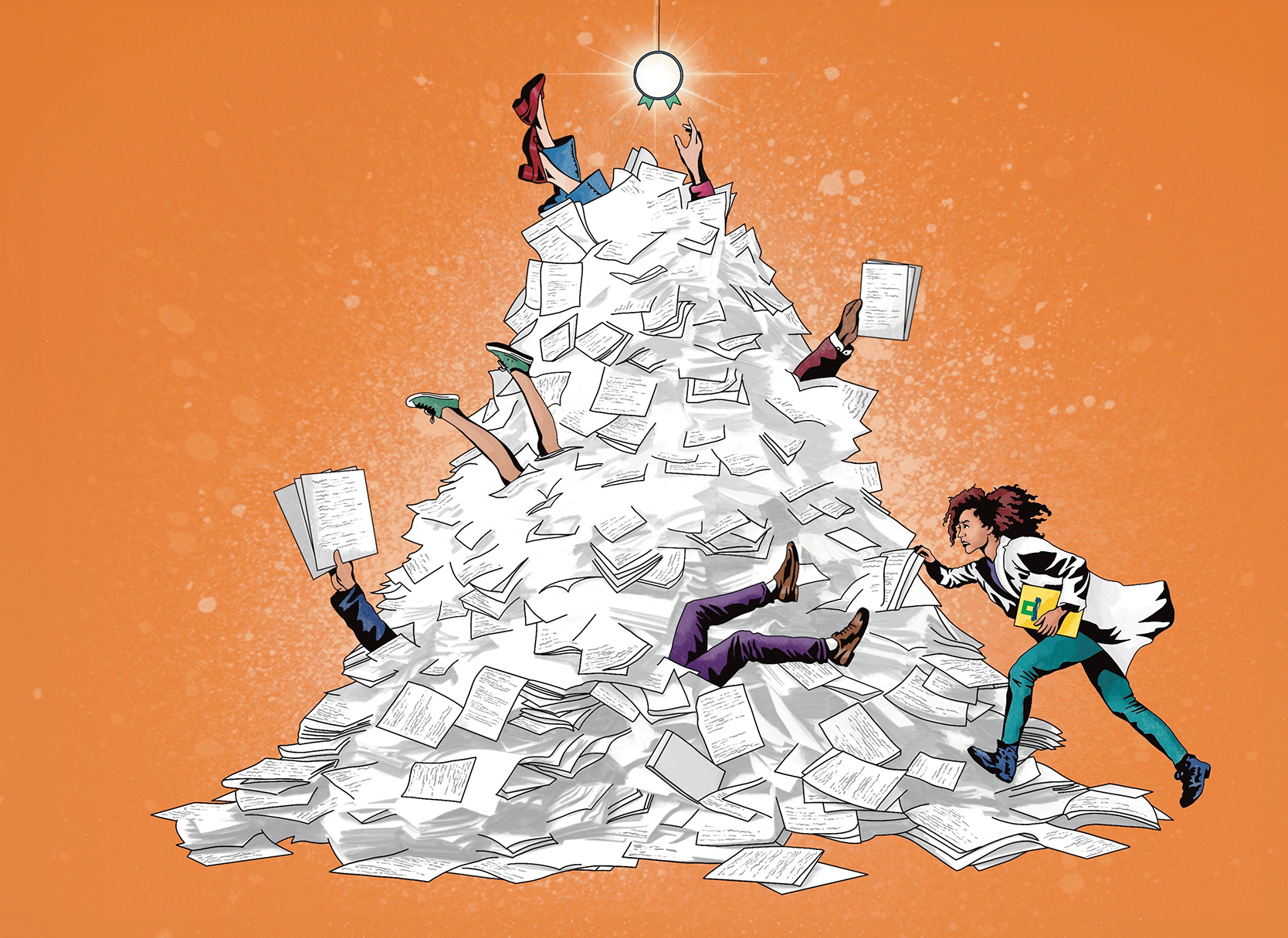 Illustration Valerie Geelen
Illustration Valerie Geelen 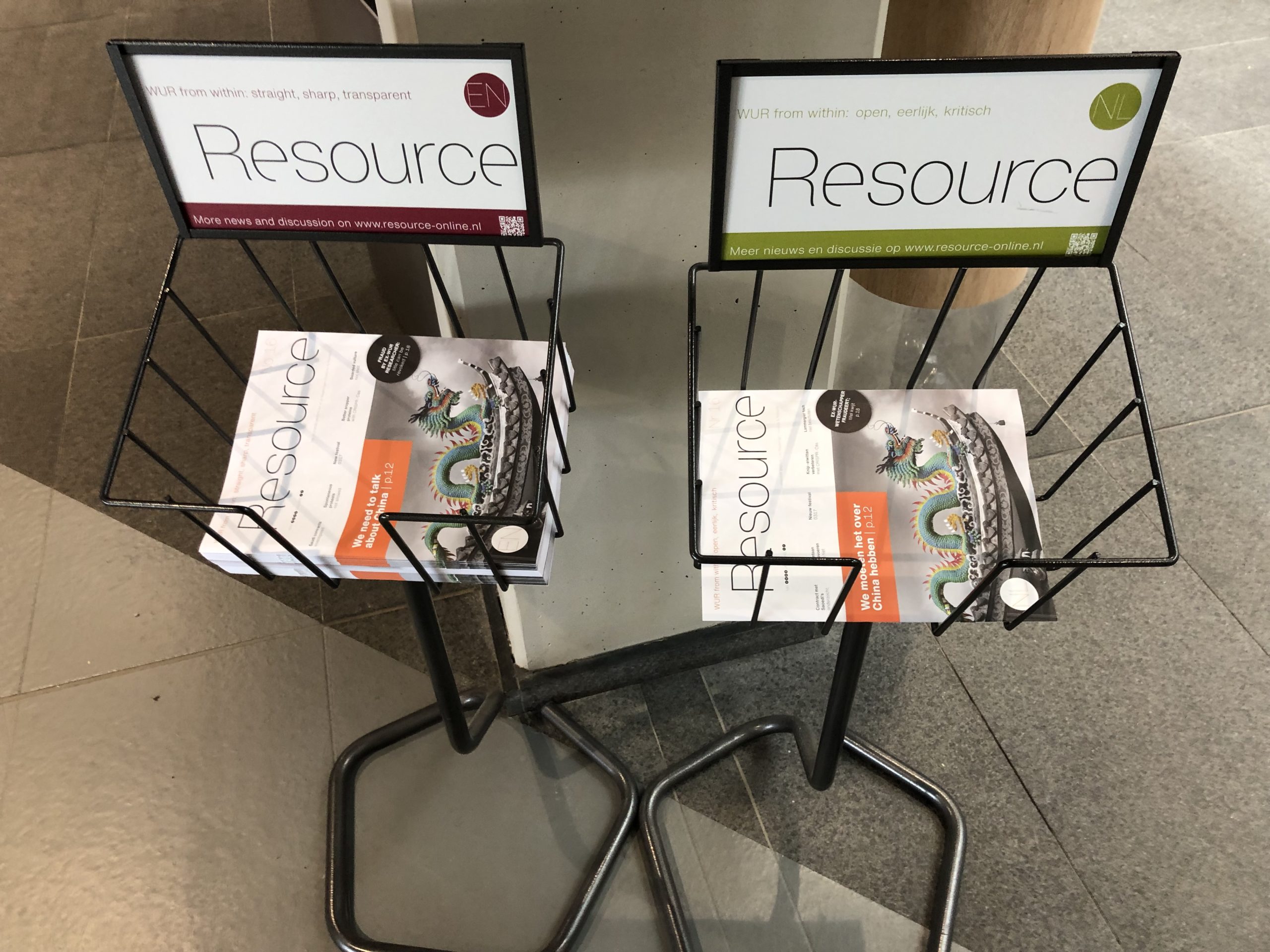
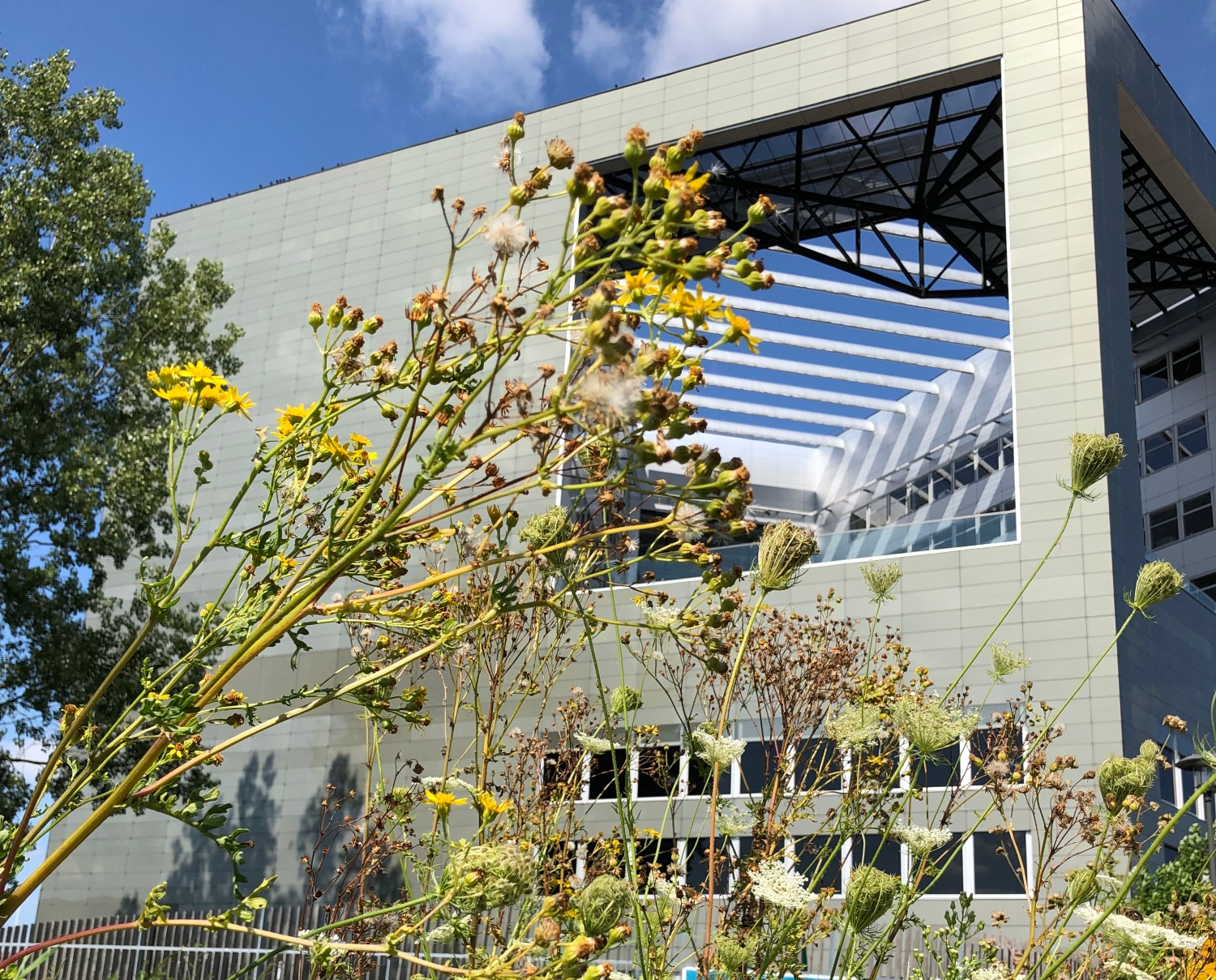
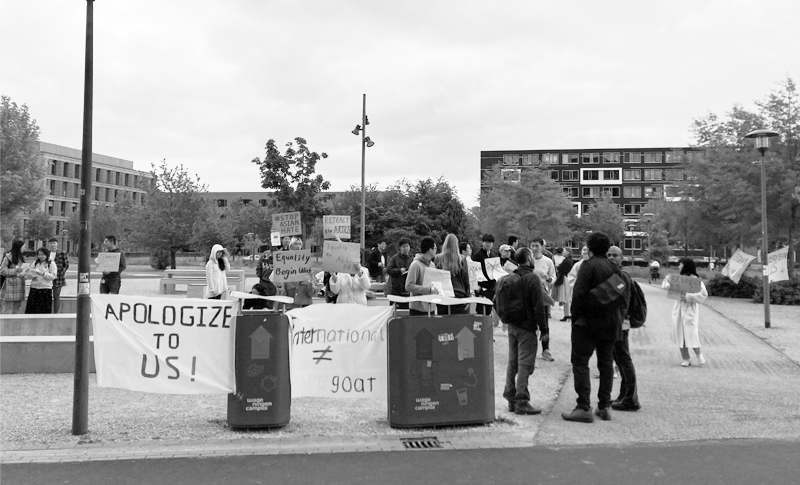
You are sooooo pathetic.
When WUR ranks #1: ‘f^ck yeah we are the best!’
When Chinese schools rank #1: ‘
The ranking is not important!
Their paper is not good!
The journals only want to make money!
Reputation is far more important!
We are still best!’
Guess what, the Dutch gov defund science, and Chinese gov ‘has invested an awful lot in science’.
Cry about it, crying baby.